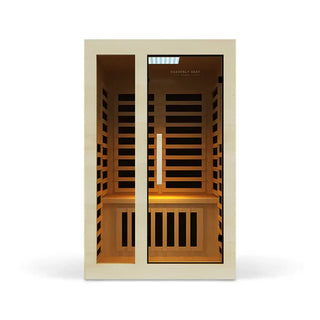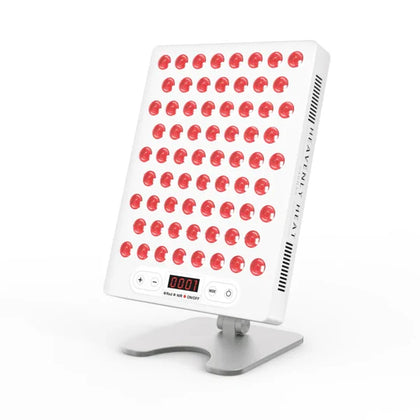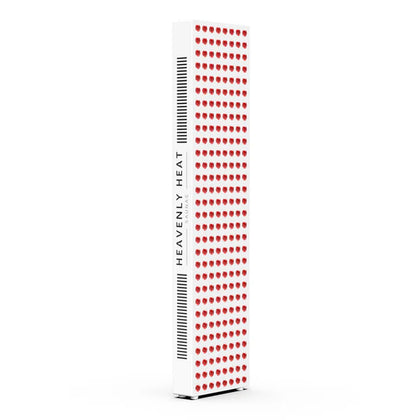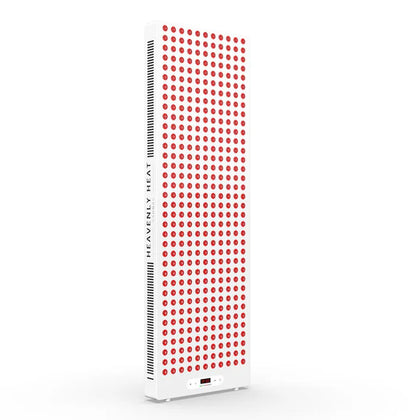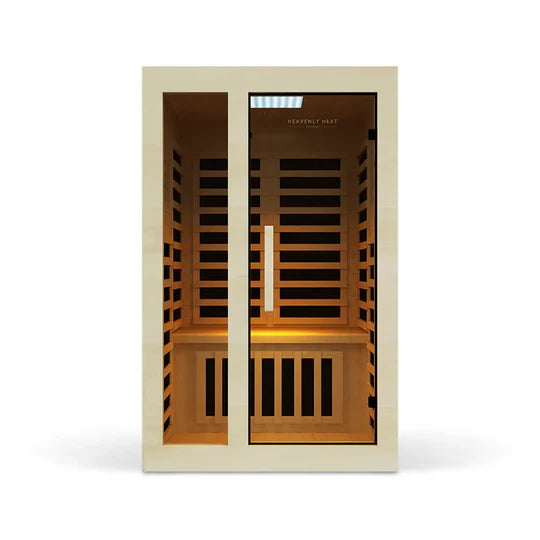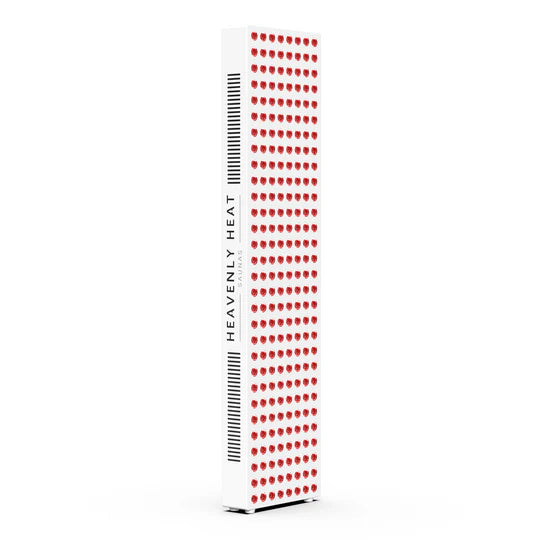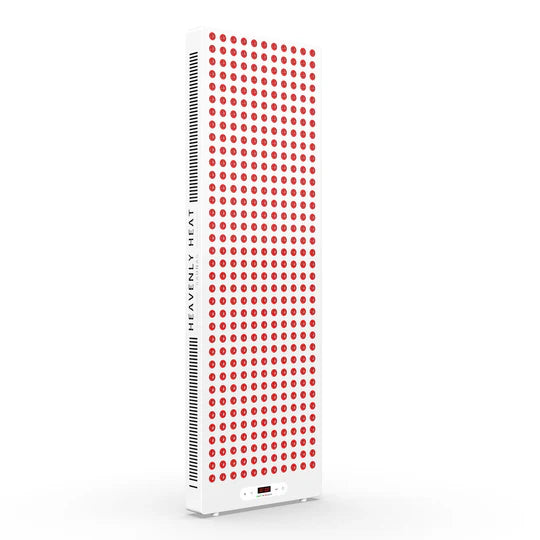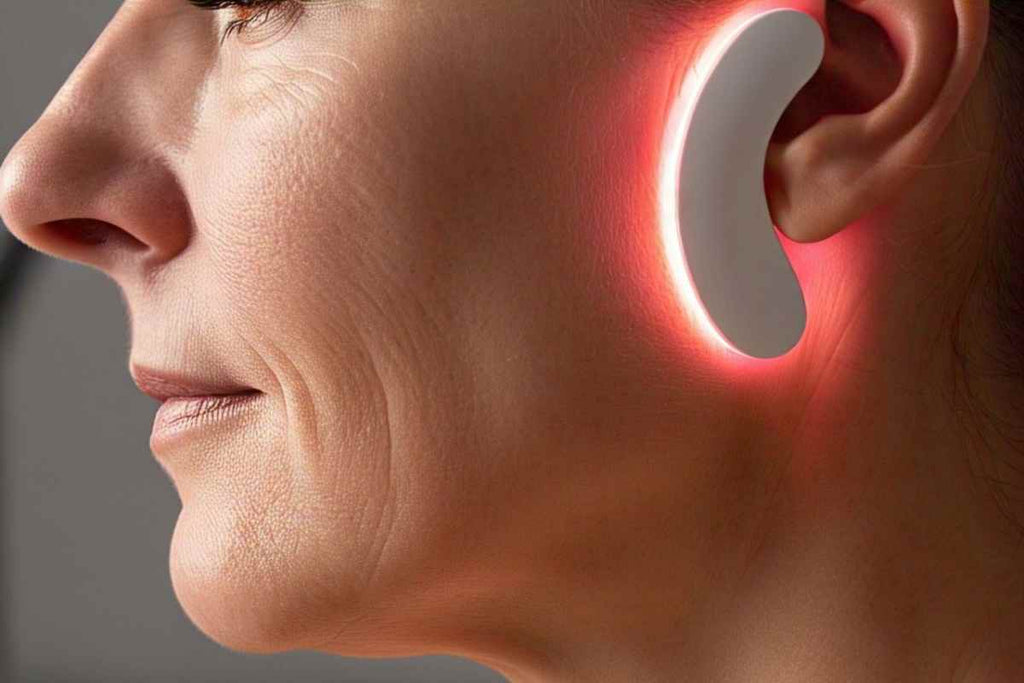Blue Light vs. Red Light Therapy: Key Differences & Benefits
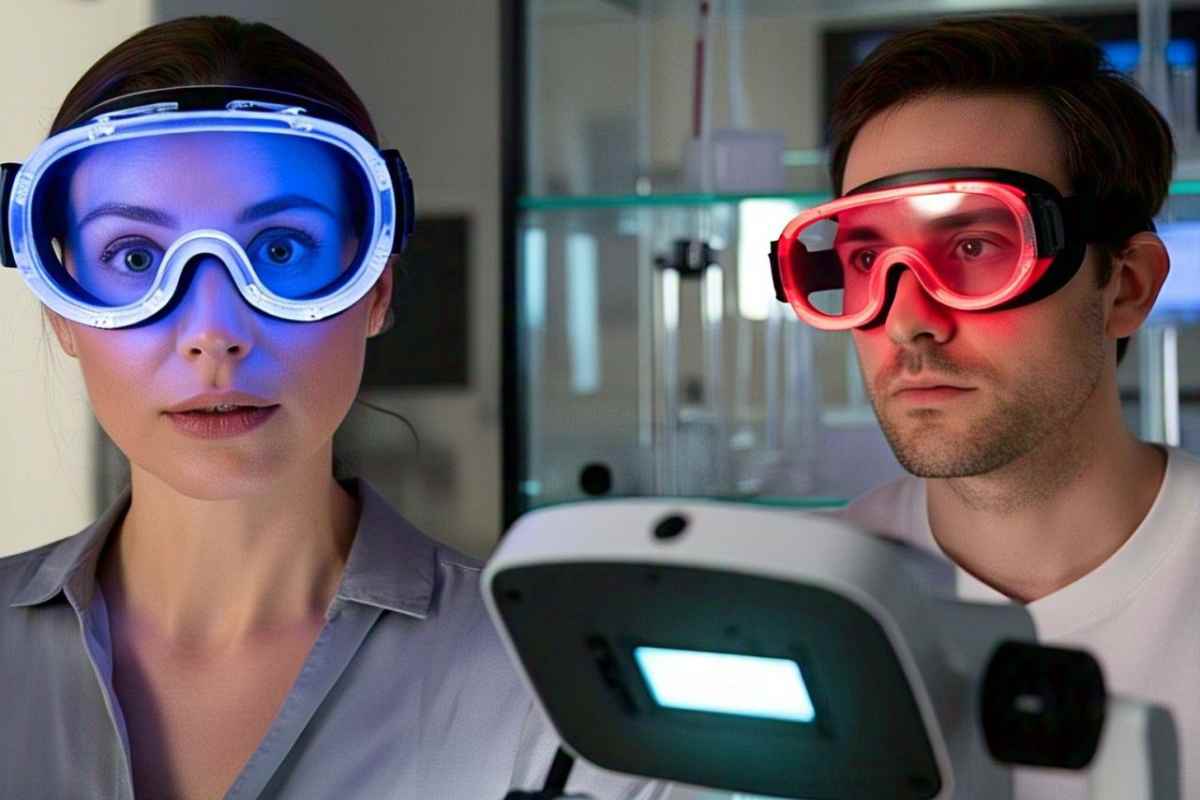
Red light and blue light therapy offer unique benefits for skin health, but they work in different ways.
Blue light targets acne-causing bacteria, while red light penetrates deeper to promote healing and collagen production.
Both therapies are safe, effective, and non-invasive. Curious about which one works best for you? Keep reading to find out!
Table of contents
Key Takeaways
-
Blue light therapy targets acne-causing bacteria, while red light promotes healing and collagen production.
-
Blue light works on the skin’s surface, while red light penetrates deeper for more comprehensive benefits.
-
Consistent use of both therapies can improve acne, skin texture, and inflammation.
-
Red light therapy aids muscle recovery, pain relief, and improves blood circulation.
-
Both therapies are generally safe, but overuse may lead to skin irritation or sensitivity.

Overview: What Is Red Light & Blue light therapy?
Red and blue light therapy are popular skin treatments that use specific wavelengths of light to target different skin concerns.
Red light therapy uses low-level red wavelengths (around 630–660 nm) to boost cell energy, support collagen production, and speed up healing.
Red light works by strengthening the mitochondria in the body's cells, which are responsible for producing the energy (ATP) necessary for cell functioning and survival.
This process helps cells work more efficiently, accelerating healing and regeneration.
Near-infrared light penetrates deeper than red light and is often used alongside red light therapy for enhanced pain relief benefits.
Blue light therapy, using shorter wavelengths (around 405–470 nm), targets acne-causing bacteria on the skin’s surface.
Both therapies work by delivering light deep into the skin, red light reaches deeper layers, while blue light stays closer to the surface.
The science behind them lies in how light affects our cells—red light stimulates mitochondria, while blue light fights bacteria.
These therapies are generally safe, non-invasive, and painless, with few side effects when used correctly.
Blue Light vs. Red Light Therapy Differences
Wavelength
-
Blue Light Wavelength: Around 450 nm, ideal for treating surface skin problems like acne.
-
Red Light Wavelength: Ranges from 600–650 nm, penetrates deeper into the skin.
-
Blue Light Effect: Targets surface layers to address acne-causing bacteria.
- Red Light Effect: Penetrates deeper layers to promote healing and stimulate collagen production.
Primary Uses
Blue light therapy is primarily used for treating acne by targeting the bacteria responsible for breakouts.
Red light therapy has broader uses, including pain management, anti-aging, and promoting healing for deeper tissue conditions.
Effects on Skin
Blue light therapy helps with acne by targeting bacteria and reducing breakouts, but it may cause dryness or irritation if overused.
It also helps reduce excess oil production by affecting sebaceous glands, which are tiny glands in the skin that produce oil to keep it moisturized and whose overactivity can lead to acne.
Red light helps reduce fine lines, improves skin texture, and stimulates collagen production without causing irritation.
Penetration Depth
Blue light primarily affects the surface layers of the skin, ideal for treating acne, while red light penetrates deeper layers, making it effective for treating conditions like arthritis, muscle pain, and improving circulation.
Benefits for Acne
Blue light therapy is widely recognized for its ability to treat acne by killing the bacteria that cause breakouts.
Regular use can prevent future flare-ups and reduce the severity of existing acne. With acne affecting around 9.4% of the global population, it’s one of the most common skin conditions worldwide.
Blue light provides a non-invasive option for managing acne, offering a safe, drug-free solution.
Red light therapy also benefits acne sufferers by promoting healing and reducing inflammation.
While blue light helps with active acne, red light can help with the scars and hyperpigmentation that often follow breakouts.

Treatment Duration and Frequency
Blue light therapy sessions typically last about 10 to 15 minutes, with treatments being recommended two to three times a week for acne treatment.
Red light therapy sessions usually last between 15 to 20 minutes, with a similar frequency depending on the condition being treated.
Red light therapy may be used more frequently if addressing pain or inflammation.
However, it’s essential not to overuse either therapy as excessive exposure can lead to skin sensitivity. For both types of therapy, consistency is key to seeing results.
Side Effects
Blue light therapy is generally safe, but it can cause some temporary side effects, such as dryness or irritation.
“I tell [my patients] to pay attention to the instructions. Sometimes people get really eager to use these devices, and they’ll use them for way longer than the intended time period,” says Dr. Sruthi Arepalli, a board-certified dermatologist and specialist in light-based therapies.
It’s crucial to avoid overuse to prevent these issues. People who take certain medications that increase sensitivity to sunlight (like isotretinoin and lithium), which can make skin more prone to burns and irritation, or have a history of skin cancer should avoid LED light therapy.
For those with sensitive skin, a consultation with a dermatologist is recommended. Red light therapy, though gentle, can still cause discomfort if used improperly.
Prolonged exposure to red light can cause mild eye strain or fatigue. Both therapies are relatively safe when used correctly, but as with any treatment, it’s important to follow recommended guidelines to avoid any negative effects.

Primary Benefits of Blue Light Therapy
Effective Acne Treatment
Blue light therapy targets acne-causing bacteria, helping to clear up active breakouts and prevent future flare-ups.
Over time, it reduces the severity of acne lesions, though its collagen-boosting effects aren’t as strong as red light, which reaches deeper layers of the skin.
"Blue light can effectively reduce acne-forming bacteria, which will prevent and reduce the severity of breakouts.
You may need to combine blue-light therapy with other treatments to effectively clear more severe forms of acne, such as nodules and cysts," says Dr. Monica K. Li, a board-certified dermatologist.
By incorporating this treatment, individuals can see a reduction in active acne, while also benefiting from an improvement in overall skin clarity and texture.
Skin Rejuvenation and Collagen Boost
By stimulating collagen production, which is the process of creating structural skin proteins for strength and elasticity, blue light therapy helps reduce fine lines and wrinkles, improving skin firmness and elasticity for a more youthful appearance.
Alleviation of Seasonal Affective Disorder (SAD)
Blue light therapy mimics natural sunlight, helping to regulate the body’s circadian rhythm, a 24-hour internal clock that controls sleep and alertness.
Using it in the morning for at least 30 minutes can boost mood and energy levels, especially during the darker months, and support better sleep patterns.
Studies show that 60–80% of people with SAD experience noticeable symptom relief from blue light therapy, making it a compelling option for those seeking a non-medicated, natural approach to managing seasonal mood changes.
Reduction of Inflammation and Irritation
By targeting excess oil production and bacteria, blue light therapy reduces skin inflammation, helping calm redness and swelling often associated with acne and skin conditions like rosacea.
Improvement in Skin Tone and Texture
Blue light therapy not only addresses acne but also improves skin tone, texture, and reduces hyperpigmentation or sun damage, resulting in a smoother and more radiant complexion.
Benefit |
Red Light Therapy |
Blue Light Therapy |
| Treats Acne | Yes |
Yes |
| Reduces Inflammation | Yes |
Yes |
| Stimulates Collagen Production | Yes |
Yes (less so) |
| Improves Skin Tone & Texture | Yes |
Yes |
| Alleviates Seasonal Affective Disorder | Yes |
Yes |
| Aids Muscle Recovery | Yes |
Yes |
| Reduces Pain | Yes |
Yes |
| Improves Blood Circulation | Yes |
Yes |
Primary Benefits of Red Light Therapy
Enhanced Skin Healing and Regeneration
Red light therapy speeds up skin healing by boosting collagen production, promoting faster healing of cuts, bruises, and wounds.
It also helps the skin bounce back more smoothly after cosmetic procedures like microneedling, a treatment using tiny needles to stimulate collagen production and improve skin texture.
This supports tissue repair and fading scars over time. In addition to these benefits, LED light therapy can treat conditions like eczema, psoriasis, and even help with hair loss.
It also works on actinic keratosis (rough, scaly patches from sun damage) and, in some cases, small superficial basal cell carcinoma, a common skin cancer caused by sun exposure, often treatable with removal, further expanding its healing potential.
Reduced Inflammation and Pain Relief
It helps reduce inflammation by improving blood flow, easing muscle tension, and boosting cellular energy, which aids recovery from injuries and brings relief for chronic pain conditions like arthritis, low backaches, fibromyalgia, and nerve damage.
Red light therapy further supports pain relief by targeting inflammation and healing, offering benefits in managing cancer-related pain and discomfort from treatments like radiation and chemotherapy, making it a promising complement to conventional therapies.
Improved Blood Circulation and Oxygenation
By enhancing blood circulation, red light therapy helps deliver oxygen and nutrients to cells, promoting faster recovery and muscle performance.
It also boosts vascular flow, with studies showing that repeated red light therapy increases choroidal vessel volume, a key component in nutrient delivery and metabolic exchange between the retina and its supporting tissues, improving circulation in key areas of the retina.
This enhanced blood flow supports better overall eye health and contributes to the healing process, making recovery more efficient.
Boosted Collagen Production and Skin Health
Red light stimulates collagen synthesis, reducing fine lines and wrinkles, improving skin tone, texture, and overall appearance over time.
Many users start to see noticeable improvements in skin firmness and tone within just one to two weeks of regular sessions, as the increased collagen production works to smooth and tighten the skin.
Enhanced Muscle Recovery and Performance
Red light therapy promotes muscle recovery by reducing soreness and improving circulation, helping athletes recover faster after intense exercise.
Using red light therapy before a workout helps prepare muscles, minimizing strain and boosting endurance.
Post-workout, it works to target inflammation, speed up muscle repair, and reduce soreness, allowing athletes to recover more quickly and perform at their best in the next session.
How Often Should You Use Blue or Red Light Therapy?
Both therapies can be used daily, but it’s important to keep sessions brief. Red light therapy sessions should last about 10 to 20 minutes, while blue light therapy sessions can be 5 to 15 minutes.
At-home devices are not as powerful as professional treatments, so while consistency remains key, you may need a bit more patience for noticeable results.
The effects of LED light therapy build over time, so it’s best to start with weekly treatments for about a month, then switch to monthly sessions to maintain the results.
Professional in-office LED light therapy devices use more powerful strengths than at-home devices, making them more effective for significant skin improvements. It's essential to avoid overuse, as it can lead to irritation or sensitivity.
Combining Red and Blue Light Therapy: Is It Worth It?
Using both blue and red light therapies together can provide enhanced benefits. Blue light targets acne-causing bacteria on the surface, while red light penetrates deeper to reduce inflammation and promote healing.
Combining the two therapies is often more effective than using them individually, especially for those struggling with breakouts and irritated skin.
FAQs
Can Blue and Red Light Therapy Be Used Simultaneously on Different Areas of the Body?
Both therapies can be used in the same session on different areas of the body. Blue light targets acne, while red light aids in muscle recovery and pain relief.
How Do Blue and Red Light Therapy Affect Different Skin Types (Oily, Dry, Sensitive, etc.)?
Blue light therapy helps reduce excess oil and unclog pores, making it ideal for oily skin. Red light therapy is beneficial for dry and sensitive skin, boosting collagen and reducing irritation.
What Are the Long-Term Effects of Using Blue and Red Light Therapy on Skin Health?
Blue light therapy is effective for acne but can cause dryness with prolonged use. Red light therapy promotes collagen production and improves skin texture, offering long-term benefits, but should be used correctly to avoid side effects from excessive use.
Are There Any Contraindications or Conditions Where Blue or Red Light Therapy Should Be Avoided?
People with photosensitivity, a condition causing skin pain, rashes, or burning from light, or compromised immune systems should avoid these therapies. Those with pacemakers or certain skin conditions like rosacea should consult a doctor before use.




